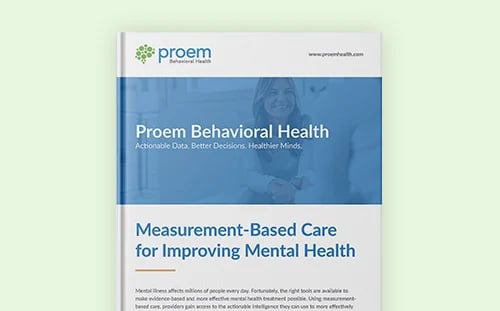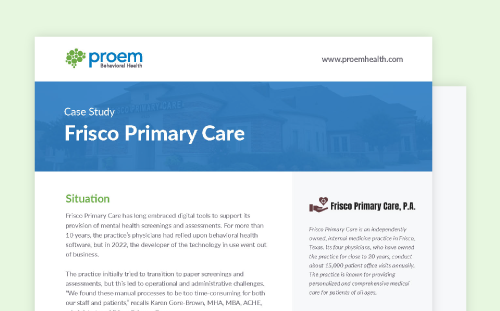
The landscape of Obsessive-Compulsive Disorder (OCD) screening and diagnosis has transformed dramatically over recent decades, moving from often-misunderstood symptoms to precise, evidence-based assessment tools. This evolution has been crucial in reducing OCD stigma and improving patient outcomes through earlier intervention and more targeted treatment approaches.
Early Understanding and Challenges
Initially, OCD screening faced significant hurdles due to widespread misconceptions about OCD. Many healthcare providers struggled to differentiate between impulsive vs intrusive thoughts, often misdiagnosing OCD as anxiety or depression. This confusion, combined with OCD stigma, frequently led to delayed diagnosis and treatment.
The development of standardized OCD diagnosis tests marked a turning point. These early tools, while groundbreaking, often lacked the sophistication needed to capture the full spectrum of OCD presentations.
The YBOCS Revolution
The Yale-Brown Obsessive Compulsive Scale (YBOCS) emerged as a game-changing OCD screening instrument in the late 1980s. This comprehensive assessment tool provided clinicians with a structured approach to evaluating OCD symptoms and their severity. The original YBOCS-I became the gold standard for OCD screening questions and symptom assessment.
The transition from YBOCS-I to YBOCS-II represented more than a minor update—it marked a fundamental shift in how clinicians approach OCD diagnosis tests and symptom assessment. Let's examine the key improvements in detail:
1. Expanded Symptom Categories and Dimensional Approach
- YBOCS-II introduced six distinct symptom dimensions, compared to the original's more limited categorization
- New dimensions include: Aggressive/Sexual/Religious; Symmetry; Contamination; Hoarding; Miscellaneous; and Somatic
- Each dimension receives separate severity ratings, allowing for more precise treatment targeting
- Better recognition of symptom heterogeneity across different patient populations
2. Refined Severity Scale
- Updated from a 0-4 to a 0-5 rating scale for greater precision
- Clearer anchor points for severity ratings
- Addition of avoidance assessment in severity scoring
- Improved capacity to detect subtle clinical changes
- Better differentiation between obsession and compulsion severity
3. Enhanced Assessment of Insight
- More sophisticated evaluation of insight levels
- Better alignment with Diagnostic and Statistical Manual of Mental Disorders (DSM) criteria
- Improved ability to distinguish between poor insight and delusional beliefs
- More accurate assessment of child and adolescent insight levels
4. Time Management Improvements
- Streamlined administration process reduces completion time by 30%
- More efficient organization of symptom checklist
- Better flow between assessment sections
- Simplified scoring system while maintaining comprehensive evaluation
5. Clinical Utility Enhancements
- Addition of functional impairment assessment
- Better integration with treatment planning
- Improved ability to track treatment response
- More detailed documentation of avoidance behaviors
- Better assessment of mental rituals and covert compulsions
6. Research Applications
- More standardized approach to symptom categorization
- Better suited for cross-cultural research
- Improved reliability in clinical trials
- More sensitive to treatment-induced changes
The Latest Innovation: Self-Report
The development of the YBOCS-II Self-Report version (YBOCS-II-SR) marked another significant advancement in OCD screening accessibility and efficiency. This adaptation addresses several practical challenges in clinical settings while maintaining the robust assessment capabilities of the clinician-administered version.
The YBOCS-II-SR empowers patients by allowing them to complete initial OCD screening at their own pace. This reduces anxiety associated with face-to-face assessment and enables patients to better prepare for clinical discussions. It also helps combat OCD stigma through self-directed engagement.
Self-report OCD assessments also are beneficial for the clinician by optimizing provider time during appointments. By providing data to the provider before the visit, the provider can better focus their clinical interviews. Furthermore, the self-report tools reduces administrative burden on clinical staff and enables regular monitoring between appointments.
Research has shown the YBOCS-II-SR to be a reliable tool for both initial OCD diagnosis tests and ongoing symptom monitoring. Studies indicate high concordance with clinician-administered assessments, particularly in:
- Symptom identification
- Severity assessment
- Treatment response monitoring
- Dimensional scoring
The YBOCS-II-SR has proven particularly valuable in primary care settings, where it can serve as an initial OCD screening tool before referral to specialized mental health providers. Its ability to distinguish between impulsive vs intrusive thoughts helps primary care providers make more informed decisions about referrals and treatment planning.
This self-report version represents a significant step forward in making comprehensive OCD screening more accessible while maintaining clinical rigor. When implemented through modern digital platforms like the Proem Behavioral Health clinical workflow software, the YBOCS in all forms becomes a powerful tool for both providers and patients in the ongoing effort to improve OCD identification and treatment outcomes.
Impact on Clinical Practice
The refinements of the YBOCS over time have significantly improved OCD screening accuracy and efficiency. Primary care providers now have better tools for initial assessment, while behavioral health specialists can better track treatment progress and outcomes.
Digital platforms have revolutionized how providers implement OCD screening tools. Proem's behavioral health solution offers:
- Streamlined digital administration of validated screening tools
- Integration with existing workflow systems
- Comprehensive reporting capabilities
- Evidence-based decision support
Get Started with the YBOCS Tools
The evolution of OCD screening tools represents significant progress in mental health assessment, but implementing these scales requires a license agreement. Proem is the exclusive licensee of many OCD assessment tools including all versions of the YBOCS. Proem offers these tools in digital format on its software platform, making evidence-based OCD screening accessible and efficient for healthcare providers.
To learn how Proem can help you accurately and efficiently screen for and diagnose OCD, visit our Behavioral Health Tools page or Contact Us for more information. Let's work together to improve the lives of those affected by OCD.





.png)









